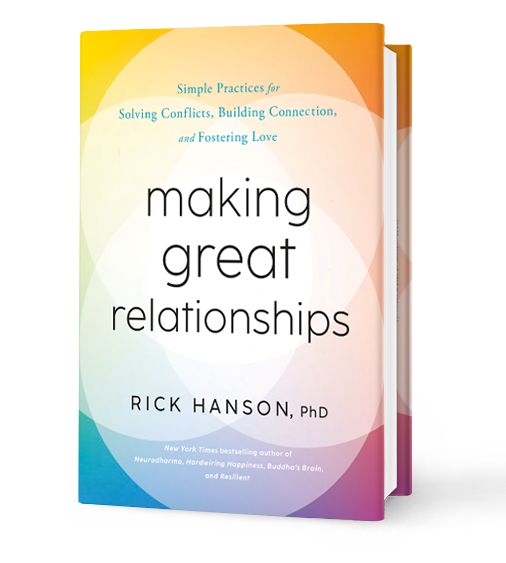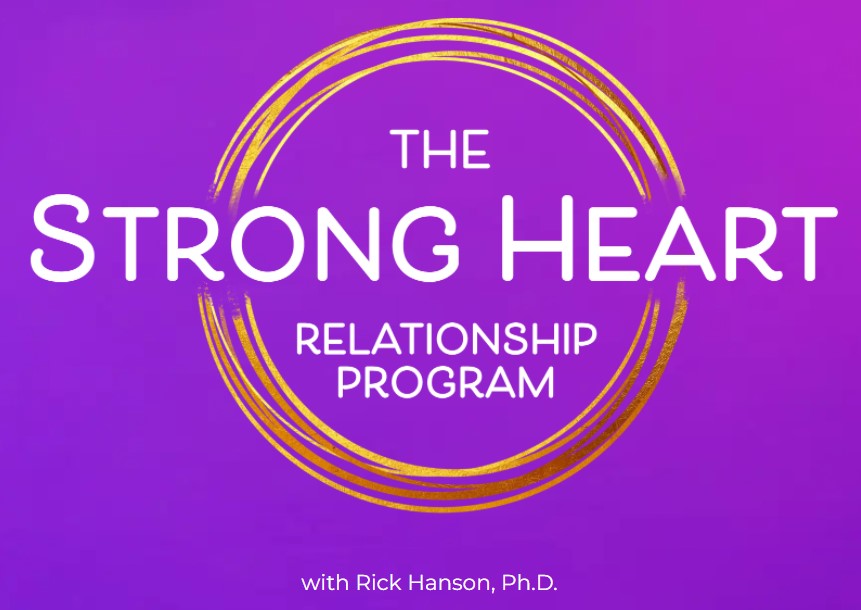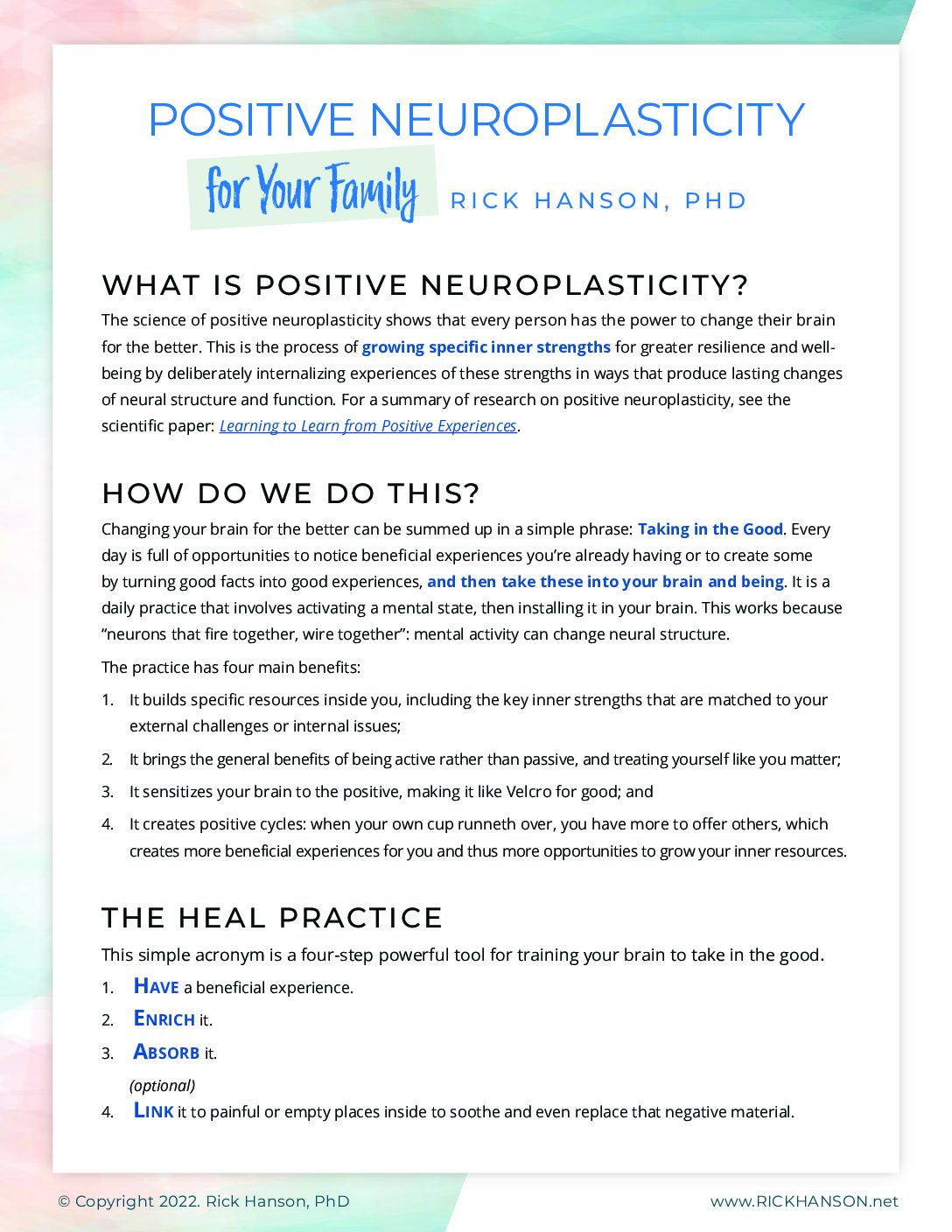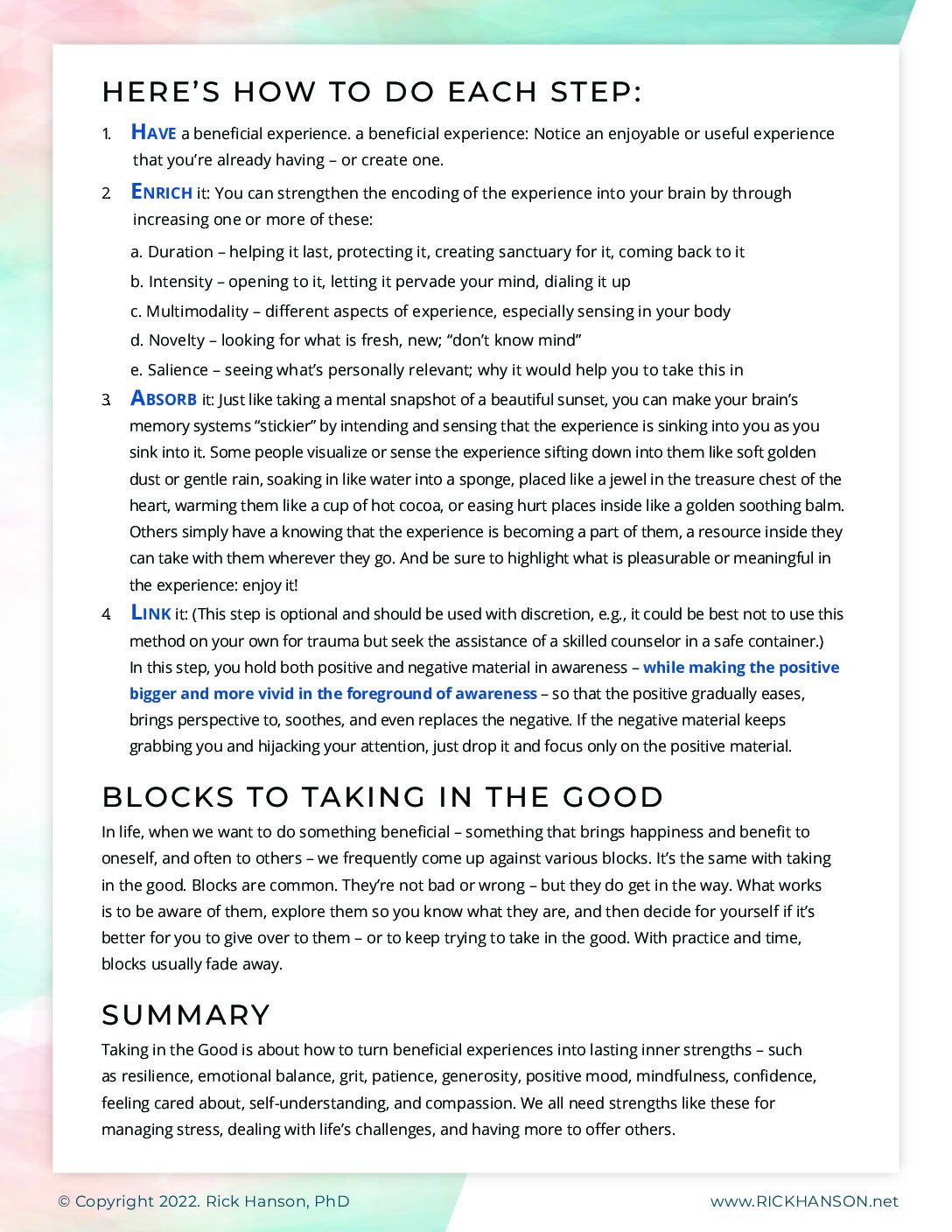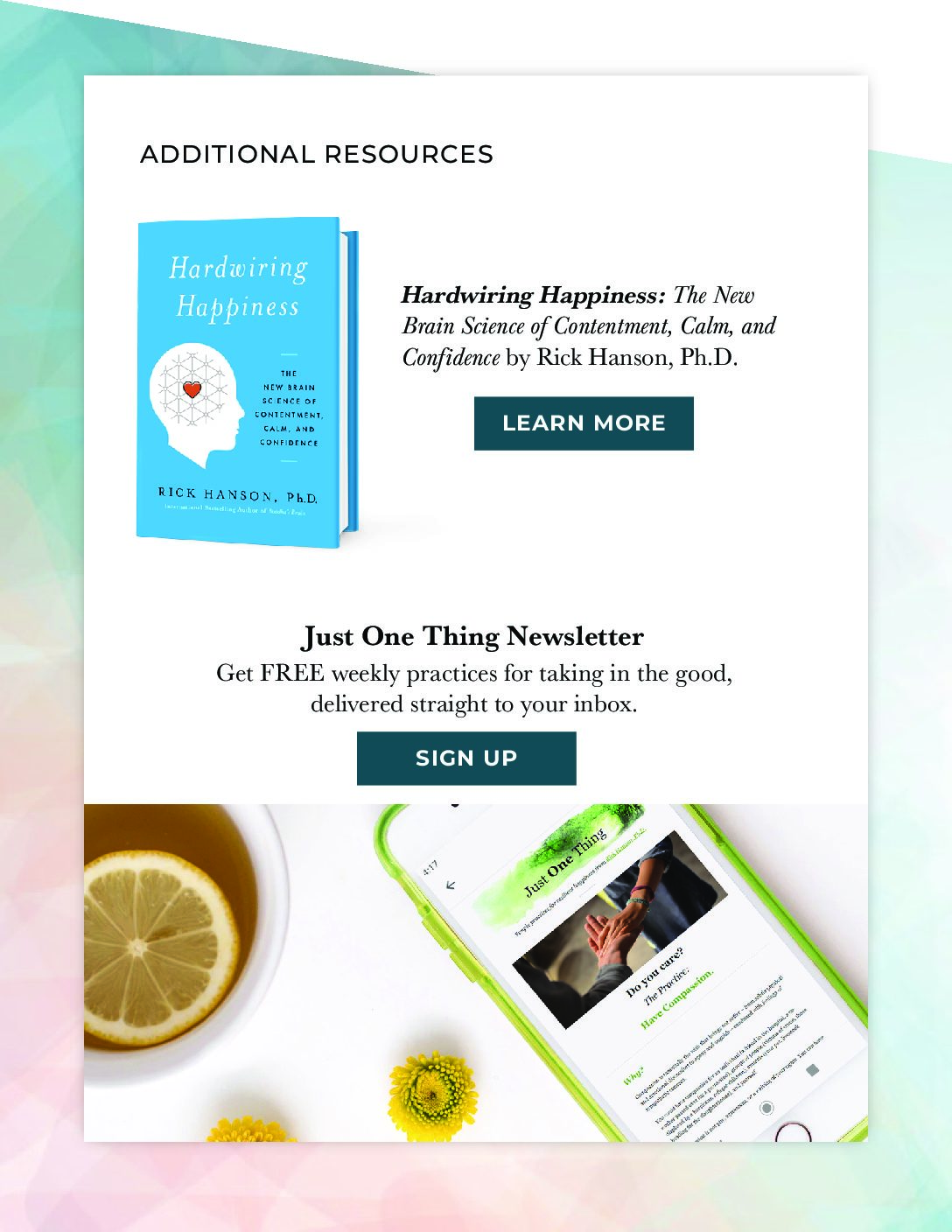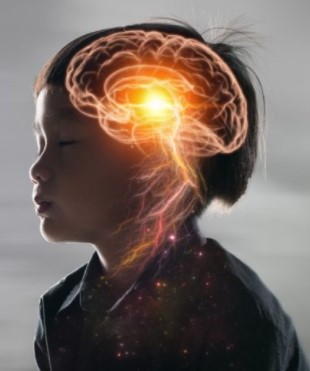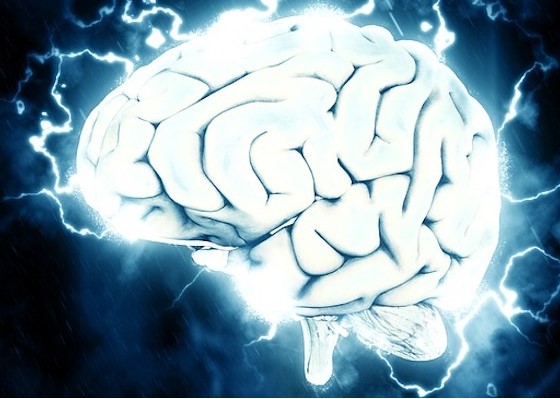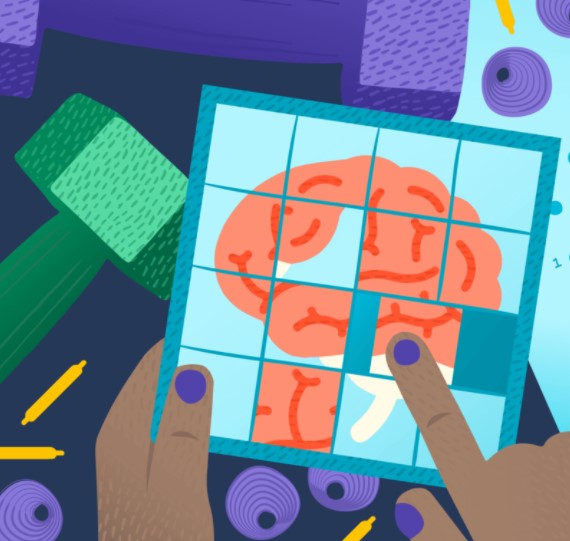Positive Neuroplasticity for Community
Relationships
Video: Learning to Love at Will
In this video from the Mindful Relationship Summit, Rick Hanson explains how the brain’s evolution from amphibian to primtate influenced our three core needs for safety, satisfaction, and connection. Today we have the capacity to “love at will,” to build the muscle of human love for one another in order to improve our connection with others and grow more satisfying relationships.
Article: The Brain in Lust and Love
The Evolution of Empathy, Cooperation, and Caring – And Graceful Ways to Ride the Roller-Coaster of Romance
The marvelous human capabilities for understanding each other, and feeling understood, developed in the brain over millions of years.
Learning about these can help you understand and work better with your own empathic capabilities.
And they point to a hard-wired tendency in the human character – a kind of Dark Side of the Force – that must be managed, even transcended, for the full flowering of virtue, compassion, empathy, kindness, and love.
More Good Stuff on Relationships
Talk: Empathy and Compassion in Society
Practice: Choose to Love
Talk: Skillful and Unskillful Patience in Your Relationships
Key Skills for Great Relationships
The Effect of Relationships on the Evolving Human Brain
by Rick Hanson, Ph.D.
Your brain is the product of 3.5 billion years of intense evolutionary pressure, including 2.7 million years as tool-using hominids and over 100,000 years as homo sapiens.
Human DNA is about 98-99% identical to chimpanzee DNA. But that crucial 1-2% difference is mainly the genetic factors affecting the brain – especially for its relationship functions. In fact, the latest science suggests that the evolution of the brain was driven in two steps having to do with the survival benefits of strong relationships.
First, among vertebrates, many bird and mammal species developed pair bonding as a way to raise children who survived. (Remember that fish and reptiles generally do not raise their young and may in fact eat them if they happen upon them soon after they hatch.)
The “computational requirements” of choosing a good mate, working things out together, and then raising young to survive – hey, it’s just sparrow and squirrel couples, but anyone who has raised kids knows what I’m talking about – required larger brains than those of reptiles or fish that dealt with similar environmental challenges but made their way in life on their own.
By the way, it may be a source of satisfaction to some that polygamous species usually have the smallest brains.
Second, building on this initial jump in brain size, among primate species, the larger the social group, the bigger the brain. (And the key word here is social, since group size alone doesn’t create a big brain; if it did, cattle would be geniuses.)
In other words, the “computational requirements” of dealing with lots of individuals – the alliances, the adversaries, all the politics! – in a baboon or ape troupe pushed the evolution of the brain.
In sum: More than learning how to use tools, more than being successful at violence, more than adapting to moving out of the forest into the grasslands of Africa, it was learning how to love and live with each other that drove human evolution!
Intimacy and Autonomy

Love tends to join and hate to separate, but joining is not the same as love, and separation is not hatred. Sometimes the most loving thing a person can do is take a step back: that’s distance in the service of attachment. And it’s not loving to join in invasive or smothering ways. Most people want both closeness and independence. Intimacy and autonomy in all their forms: your course in life is shaped by how well you regulate their dance in your mind, and their expression in your relationships.
Parenting
back to top
Positive Neuroplasticity for Your Family
Dr. Rick Hanson’s overview on Positive Neuroplasticity provides a step-by-step approach for learning the powerful tool for training your brain to take in the good – helping you build your skills for parenting.
Articles on Parenting and Neuroplasticity
Early Experience May Shape Neural Responses and Anxiety Risk in Toddlers
by Rebecca J. Brooker, Ph.D.
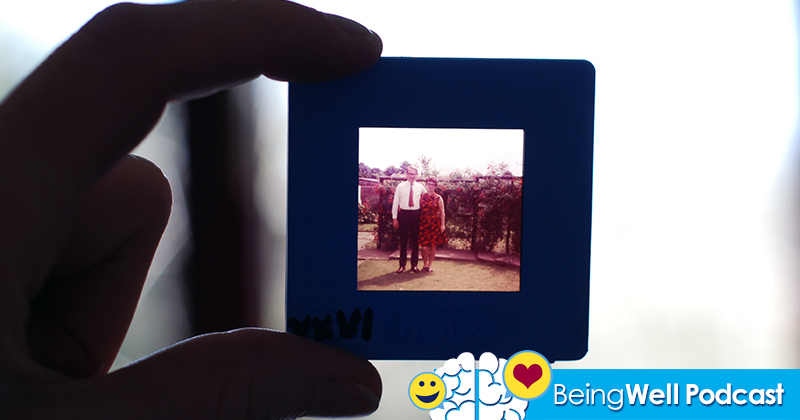
It’s all too easy to pick up the patterns from our parents, and the way we were conditioned to behave as children. This podcast explores how we can work with ourselves to relate to them and others more effectively.
Parents: How to Lower Your Stress
Nurturing yourself is what enables you to be at your best for your children. Further, parenting is not a hobby you picked up for fun. You work hard for the sake of your children and family, and that entitles you to respect, care – and stress relief.
Here are 10 key ways a parent can lower their stress level and start feeling immediately better.
The Neuroscience of Good Parenting
Parents influence children’s brain development in ways that can shape how we think about our experiences for a lifetime. This article suggests that forming the neurobiology of the childhood brain first requires care for the parents, ensuring they feel safe and secure to effectively buffer their children’s stress biology
Katie Marsico’s wonderful My Mindful Day series for early readers will introduce your child to daily mindfulness practices that encourage social emotional learning, empathy, compassion, and personal peace.
Inward Bound Mindfulness Education (iBme) offers in-person retreats and online programs to help teens deepen their self-awareness and empathy and utilize techniques to calm and focus the mind.
The Cerebral Palsy Alliance offers research, resources, and stories on why neuroplasticity is the secret ingredient for kids with special needs.
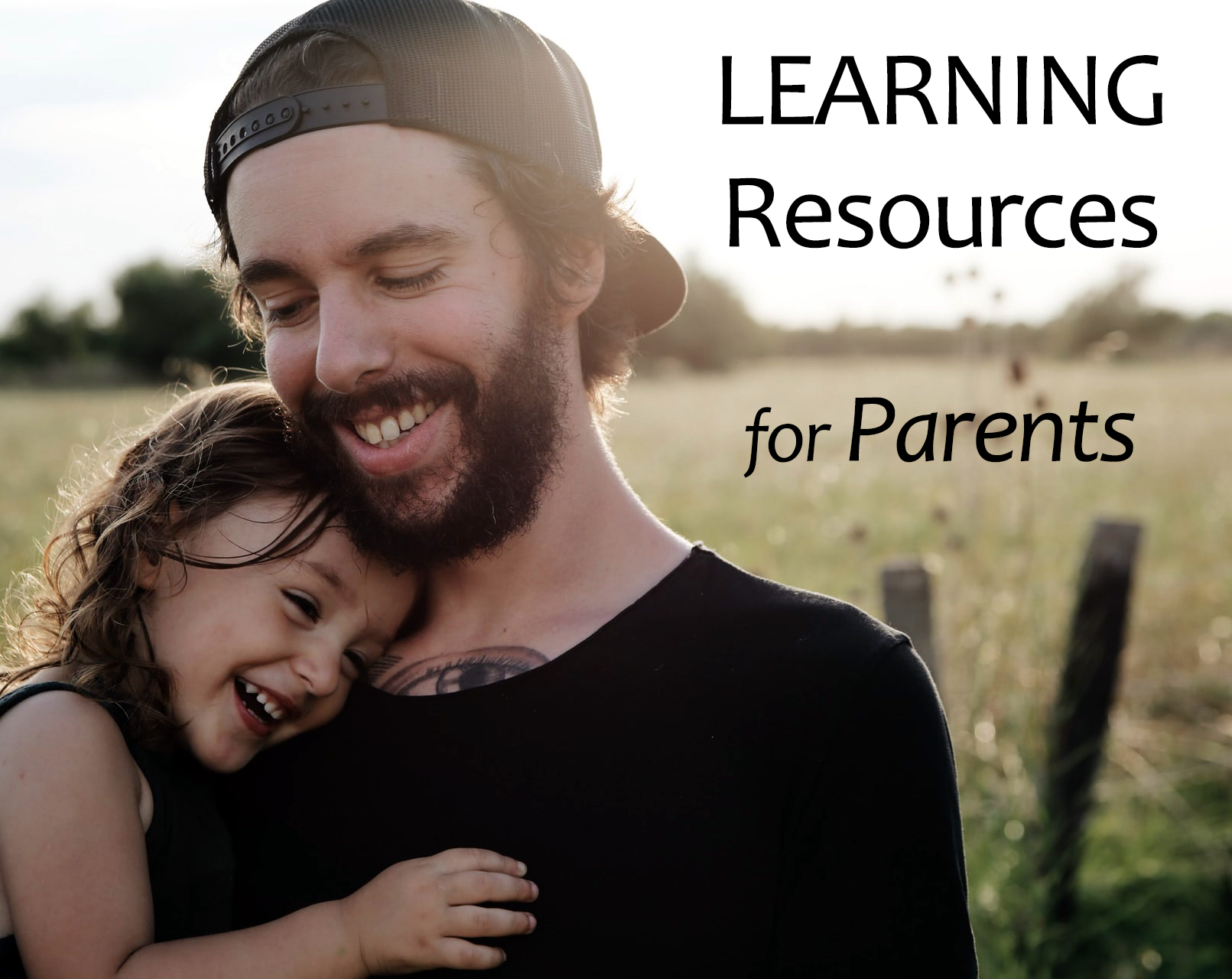
Work
back to top
How To Be Truly Happy at Work
Aurélie Litynski shares hands-on tools to create a positive workplace culture by using our natural ability to shift our mindset and find solutions to be happier at work.
Understanding the Neuroscience Behind Great Leadership
Understanding more about how the brain works can help leaders adapt their minds to the latest challenges and build better resilience for themselves and their organizations.
The Important Business Skill You Need To Know
Business coach Ruth Kudzi explains why neuroplasticity is such an important business skill, in that it allows business owners to adapt to change effectively.
How the science of neuroplasticity can help employees thrive
Using the brain’s ability to form and reorganize synaptic connections, this article describes how we can remodel behaviors and adapt to create a better workplace.

